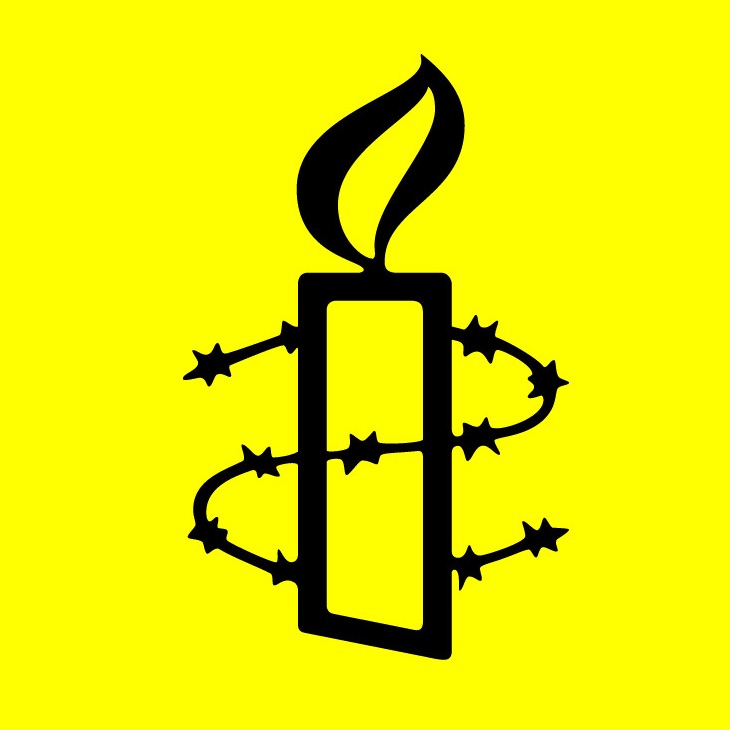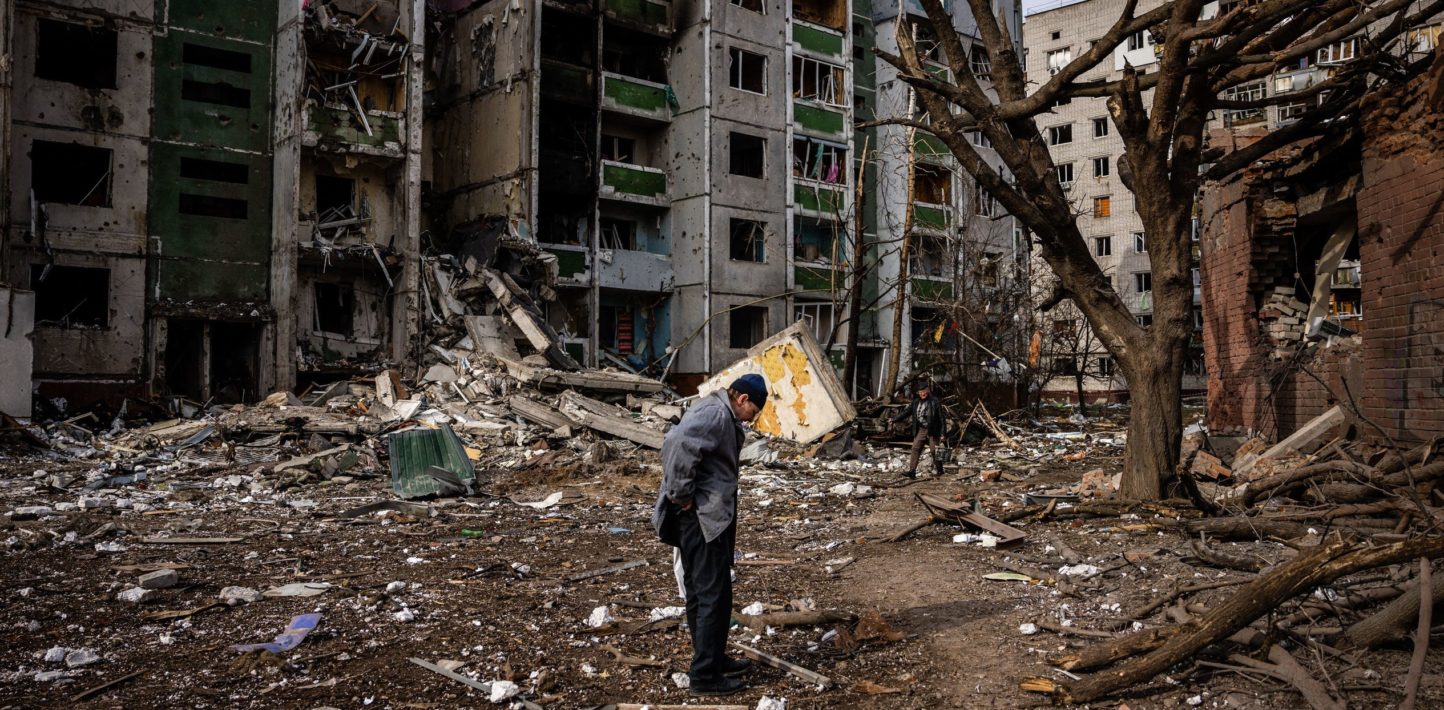On the night of 24 February, I couldn’t sleep, constantly checking Twitter and looking for any signs that the long-predicted Russian invasion would not happen. This night was sleepless for many in Ukraine.
I was reloading my newsfeed again and again, reading increasingly disturbing news “the sky above all areas of the eastern Ukrainian border has been closed to flights”; “Russian diplomats have left their embassy in Ukraine in a hurry”. Hours were passing by. After updating my newsfeed once more, CCTV video footage popped up, showing tanks crossing one of the border checkpoints into Ukraine. “It has started” – messages were appearing one by one.
Just a few breaths after I saw the news, something started to explode loudly. At the same moment everyone in my home woke up in shock and disbelief. In matter of minutes, we took the two backpacks that had been prepared weeks ago “just in case”, dressed our sleepy daughter in a winter coat over her pyjamas and left our little family home without looking back. It was a very dark and foggy morning. A cup of tea I made in the early hours of the morning remained untouched on the table.
Even though the possibility of a Russian invasion had been discussed for months, people in Ukraine believed that an event like that would be impossible. And not just in Ukraine. It would lead to tremendous consequences that would affect not only my country, but also Russia as well, and so many other countries around the world. Surely, no-one would allow this to happen.
Even though the possibility of a Russian invasion had been discussed for months, people in Ukraine believed that an event like that would be impossible. And not just in Ukraine
For months, despite the disturbing news, people in Ukraine were trying to live their lives. However, it is easy to see now that all the signs of an imminent invasion had been developing rapidly.
In January 2022, Russia placed an estimated 100,000 troops, and military equipment near the Ukrainian border. It was claimed that these troops were participating in military exercises and were about to leave and go back to their bases soon.
On 15 February Russia’s State Duma asked President Vladimir Putin to recognize independence of the so-called Donetsk and Luhansk People’s Republics, territories controlled by Russia-backed armed groups in the east of Ukraine.
Less than a week after that, Putin convened and chaired a televised meeting of Russia’s Security Council. At that meeting the members of the Council were asked, one by one, to express their opinion regarding the recognition of the “Republics”. Unsurprisingly, all of the members expressed their strong support, although some were visibly nervous.
On the same day, 21 February, in his televised address Putin stated that Ukraine had never been a real state, but had been “artificially” created in the 20th century. It was a long address, dismissing Ukrainian nationhood, blaming NATO and promising to restore “historical justice” for Russia.
“Is he declaring war?” – asked some foreign journalists on Twitter after listening to his speech. The answer was soon clear.
On 24 February the Russian invasion started with the shelling of military facilities in many parts of Ukraine, Russian troops crossing borders from the north and east of Ukraine, and from the south through occupied Crimea. Russian ships blocked the Black Sea.
In the last month Russian troops have, and continue to, repeatedly violate International Humanitarian Law (the ‘laws of war’), systematically launching indiscriminate attacks killing and injuring civilians and destroying homes, hospitals, schools and other civilian infrastructure.
The scale and impact of this war in Europe is unprecedented since the Second World War. Hundreds, an in all likelihood thousands, of civilians have been killed or injured in attacks by Russian forces. More than 10 million people have been displaced, with over 3 million having fled Ukraine to other countries.
The scale and impact of this war in Europe is unprecedented since the Second World War. Hundreds, an in all likelihood thousands, of civilians have been killed or injured in attacks by Russian forces
Although Putin claimed in the beginning that the Russian military targets only military infrastructure, this never appeared to be true.
Within hours of the invasion, Amnesty International verified reports and video footage that showed indiscriminate attacks across the country. Numerous strikes on hospitals and schools were documented. Russian troops were using inaccurate explosive weapons such as ballistic missiles and banned weapons such as cluster bombs. Russian forces carried out attacks that struck and destroyed residential houses, schools, kindergartens, medical facilities, and food stores.
More reports are emerging that point to further war crimes committed by Russian troops.
If you’ve seen the news you know big cities such as Kharkiv, Kyiv and Mariupol, as well as dozens of small towns and villages in Ukraine, are under relentless attack. Their desperate inhabitants are caught in the crossfire or under siege by attacking Russian forces.
Kharkiv, the second largest city in Ukraine, located about 30 km from the border with Russia is under constant bombardment with dozens killed and injured, civilian infrastructure widely damaged or destroyed and people struggling for their lives in unbearable conditions.
Several towns near Kyiv, like Irpin and Bucha, used to be picturesque and quiet neighbourhoods to which young families would move. But now they are largely destroyed, on the verge of being wiped out, leaving hundreds dead and thousands displaced. Those peaceful suburbs are now a humanitarian catastrophe.
In the east of Ukraine, the city Izyum, was a town of over 40,000 inhabitants. It has now been widely damaged and largely devastated.
According to testimonies collected by Amnesty International people in Izyum don’t have access to electricity, gas, or heating. Any form of communication has been cut off, and they are also suffering from the lack of sanitation and clean water.
People who have managed to flee the town are sharing their stories.
Tetyana, who took cover in a shelter in the town with her five-month-old baby, said: “When we were leaving [evacuating], there were three five-litre containers [of water] left for 55 people. I don’t know how they are going to survive.”
Natalia, a resident of a private house, said: “We spent six days in a cellar. It’s very small, you have to stand in it, it’s impossible to lie down. As soon as there was a pause [in attacks], we would quickly run out, and get some eggs from the hens… Our child was hungry, since we hardly ate. All we had was leftover dry bread, apples from the cellar, canned pickles, and jam… We couldn’t get any other food anywhere; we couldn’t leave our house. Everything was under fire.”
The Russian war against Ukraine has brought the destruction of lives, cities, families, and the hopes and dreams of many people.
However, the destruction ordered by Putin is not only the destruction of Ukraine and Ukrainians. It is also the destruction of the hopes and aspirations of many Russians.
However, the destruction ordered by Putin is not only the destruction of Ukraine and Ukrainians. It is also the destruction of the hopes and aspirations of many Russians
This war is also causing the destruction of the lives of people far beyond these two countries, as the food crisis escalates and the environment is damaged. With ever more people being forced to leave their homes to seek a safer life.
However, as it was during the Maidan revolution, Ukrainian society shows an incredible resilience and ability to unite in the darkest hours and spread hope.
Civil society organizations, that have been the backbone of Ukrainian society for years, are now focused on helping civilians – they organize evacuations, the delivery of humanitarian aid from other countries and try and distribute it to affected areas, doing it under constant shelling, at risk to their lives.
The director of one of the grass roots NGOs that operates in the east of Ukraine, is now together with her colleagues evacuating civilians from the most affected regions. Every day she writes a post on Facebook saying “We are alive. Working”.
Although the many lives lost in this war will remain a wound for Ukrainians and others for decades to come, as long as activists, volunteers and civil society organizations are alive and working, the restoration of Ukraine, peace and human rights is possible.
I still harbour hopes to come back home and see that cup of cold tea on the table.
Maria Guryeva, Amnesty International
STOP THE AGGRESSION AND PROTECT CIVILIANS IN UKRAINE
Right now, people in Ukraine are facing a catastrophic human rights crisis. People are dying, including children, and many thousands of lives are at risk. Take action to demand that the Russian authorities stop this act of aggression and protect civilians now.


